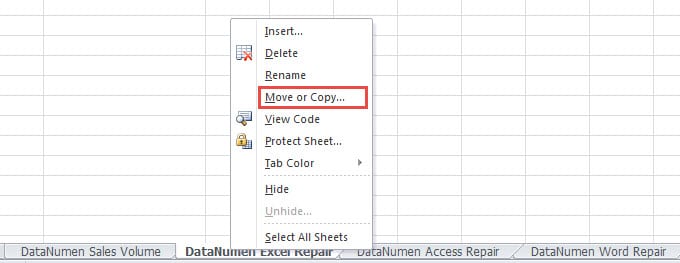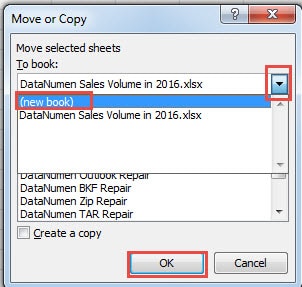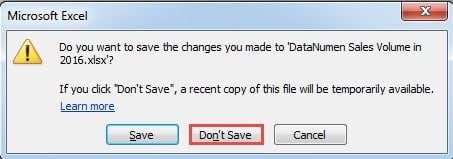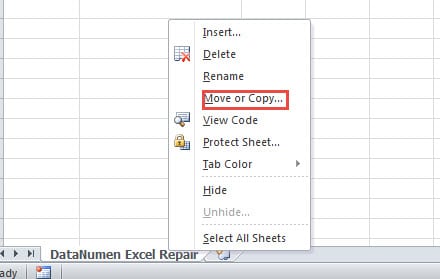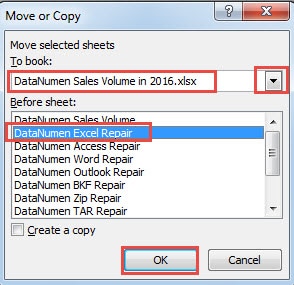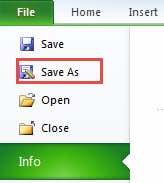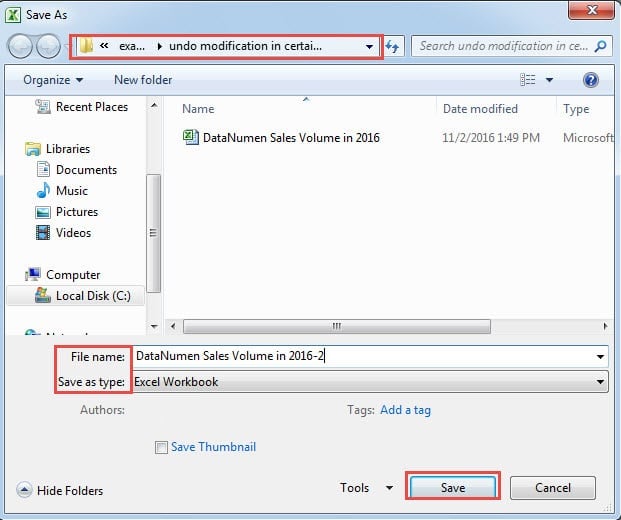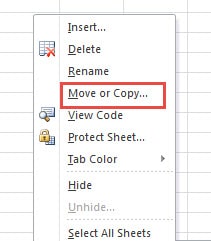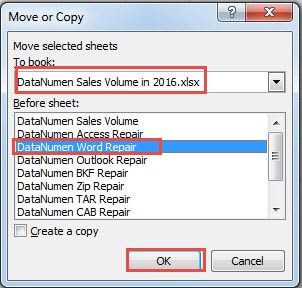Sometimes you don’t want to save the changes in certain worksheets. Now we have a quick method to undo changes in specific worksheets.
Suppose you have made several changes in different worksheets. In the image below, you can see that there are many worksheets in this file. And you change the contents in all the sheets by the order.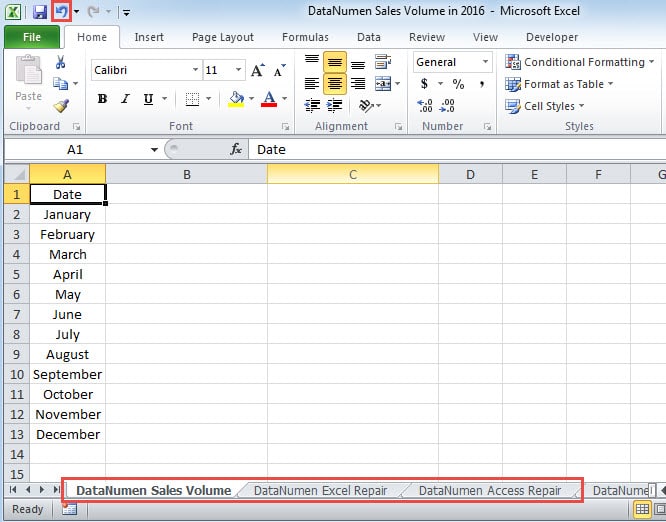
However, you find that the changes sheet “DataNumen Sales Volume” and sheet DataNumen Access Repair” is unnecessary. If you use the “Undo” feature in Excel, you can undo some steps. But there still exists a problem. You will also undo modifications in the sheet “DataNumen Excel Repair”. If the changes in this worksheet need to be retained, you need to edit this worksheet again. This is very annoying especially if you need to change a lot in this sheet. Thus, you can follow the steps below to quickly undo modifications in target worksheets.
Method 1: Move Certain Sheets to New Workbook
- Right click the sheet tab that you need to save the modification.
- And then in the menu, choose the option “Move or Copy”.
- After that, you will see a new window. Click the small arrow of “To book”.
- In the list, choose the option “new book”.
- Next click “OK”. Thus, this worksheet has been moved to a new workbook. Move the other sheets that you want to save the modifications.
- Now save the new workbook in a designated path.
- And then close the workbook.
- Now you come back to the original workbook. In this interface, you may find that the “Undo” button is invalid.
Here don’t save the workbook. Close it in this step.
- In the warning information dialog, choose the option “Don’t Save”.
Thus, all the workbooks have closed.
- Now open the two workbooks again. In the original workbook, you will find that all the modifications have not been saved.
- And then come to the new workbook that you have saved. The modifications in those worksheets have all been saved.
- Right click the sheet tab.
- In the submenu, choose the option “Move or Copy” again.
- And then in the window, click the arrow of the “To book”.
- In the drop-down menu, choose the original workbook.
- Next select the position that you want to put.
- After that, click “OK”. Thus, the worksheet moves back to the original file. Because there will be two sheets with the same name, Excel will automatically add “(2)” for the new worksheet. Here delete the old sheet and rename for the new worksheet. And if there are other sheets, repeat the above 6 steps.
- Now all the sheets with modifications have been moved back to the original file. You can save this workbook.
- And then close it. As for the new workbook that you have created later, you can delete it from our computer.
With all the above steps, the changes in some worksheets will not be saved. And other modifications that you need will remain in the workbook. Although it seems to contain many steps, it is easy to operate. Besides, this method also overcomes the shortcoming of the “Undo” feature.
Method 2: Save As a New Different File
Except for the above method, you can also use this method.
- Click “File” in the ribbon.
- Next click “Save As”.
- Now in the “Save As” window, input the path that you need. And then input a new name for the new file.
- After that, click “Save”. Thus, the original workbook will close without saving automatically. And the new file is open in the system.
- And then open the original file again.
- Delete the sheets that you need to save the change in the original file.
- And then switch to the new file. Here if the number of sheets that you don’t want to save changes is less that the number of other sheets, you can also move the original sheets to the new workbook. And in this example, we move the sheets into the original workbook.
- Right click the tab of the sheet that you need to save the changes.
- And then in the menu, choose the option “Move or Copy” again.
- In the window, choose the original workbook.
- And then choose the position that you need to place the sheet.
- After that, click “OK”.
Thus, the sheet with modifications will come back to the original workbook.
- Now repeat the steps and move other sheets that you need to save the changes.
- And then save the original workbook.
- Now close the original workbook. Thus, the sheets with modification will remain in the file. And other modifications will not remain. As for the new file that you have created, you can delete it now.
A Comparison of the Two Methods
In the table below, we have made a comparison of the two methods.
| Comparison | Move Certain Sheets to New Book | Save As a New Different File |
| Advantages | 1. Only selected worksheets are moved, so you don’t need to find them in the target workbook.
2. More convenient if only a few of the modified worksheets need to be kept. |
1. More convenient if most of the modified worksheets need to be kept. |
| Disadvantages | 1. Not convenient if most of the modified worksheets need to be kept. | 1. Need to find and select the wanted worksheets from two workbooks and merge them, which is not convenient. |
Excel Crashes are Unavoidable
All software still have errors, and Excel is no exception. You will meet with Excel crashes at any unexpected time. If you happen to be busy on a project, this crash will cause great trouble to you. But now you don’t need to worry any more. You can use a third-party tool to recover Excel. It is specially designed for Excel and can solve most of the problems.
Author Introduction:
Anna Ma is a data recovery expert in DataNumen, Inc., which is the world leader in data recovery technologies, including word recovery and outlook repair software products. For more information visit www.datanumen.com
